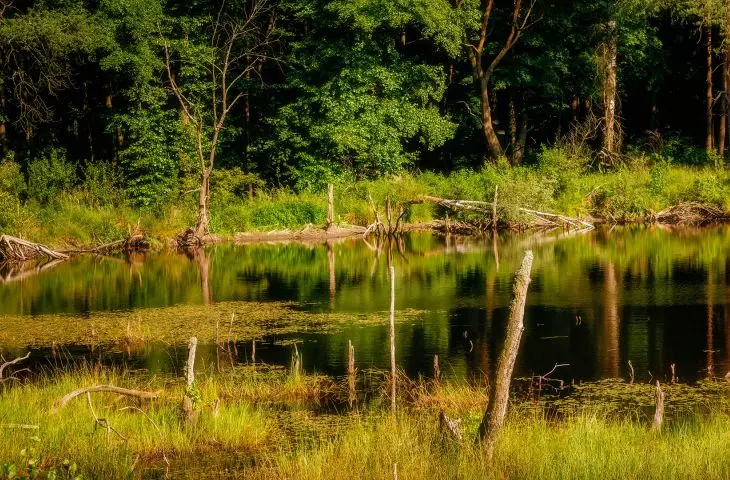Increasing flood protection
The Netherlands has been successfully implementing innovative solutions based on cooperation with nature to counter floods for years. Programs such as "Room for the River" [pl.: "Room for the River"] show that a sustainable approach to water management can benefit both people and the environment.
Beata Kozidrak once sang "Then I flow, I flow, I learn again how to love the world" [PL.: Wtedy płynę, płynę, znów się uczę, jak można kochać świat]. This, for me, is a perfect summary of how we can approach our water situation. What's more, we don't have to look particularly far for references, they are quite close to us.
The Netherlands is a lowland area, and a good portion of the area is below the water level. The urgent need for action to prevent flooding arose after major inundations in the 1990s, particularly in 1992 and 1995, which highlighted the limitations of existing flood defenses. These events prompted a reassessment of water management strategies, leading to a shift to more nature-based solutions that take into account the dynamics of nature alongside human safety.
Life is a miracle, but every move still depends on you
The Netherlands has implemented a number of strategies based on river restoration. All in an effort to increase flood protection, particularly in response to historic floods and with an eye toward a future with rising water levels. The approach is characterized by integrating nature restoration with flood management, emphasizing the importance of working with natural processes rather than relying solely on traditional engineering solutions.
One of the most important initiatives is the "Room for the River" program launched in 2006. The program's goals include creating space for rivers, for example... moving embankments deeper into the area, removing obstacles so that rivers can naturally expand their floodplains, floodplains during high water levels. This mimics and restores natural processes and increases the river's ability to cope with flood waters. Natural solutions in water management also include measures such as widening rivers. In this way, we can better manage floods and prevent their negative effects. The introduction of such solutions promotes the restoration of the natural balance of aquatic ecosystems.
The second issue is improving floodplain ecosystems. Donating land is one thing, but equally important is how we manage these places (or not) and how much we allow nature to act on its own. After all, the program is intended to restore natural habitats in floodplains, thereby increasing biodiversity and improving the biological balance.
Examples also include removing obstructions from the riverbed, allowing water to flow more freely, and lowering the level of floodplains to allow them to perform their natural retention function.
Floodplain revitalization restores floodplains to their original characteristics, and the introduction of retention, or the temporary storage of water in designated areas, and the creation of emergency canals to drain excess water, helps deal more effectively with excess water.
Cooperation with nature is based on using the dynamics of natural processes, such as water flows, wind action and the influence of vegetation. These activities bring numerous environmental benefits, as they allow humans and nature to coexist harmoniously, while helping to mitigate the effects of climate change.
Reducing river flows can also be achieved through land use modifications. Afforestation of land adjacent to rivers contributes to increasing the soil's retention capacity, which reduces the risk of flooding. Forested areas act as natural barriers that slow down surface water runoff.
Nijmegen project
As part of the "Room for the River" project in Nijmegen, H+N+S Landscape Architects designed solutions to reduce flood risk - a bypass channel was created, creating an elongated island on the Waal River. This solution improved protection against flooding and created a new range of recreational areas. The project included the construction of new bridges and a river park that is open to residents. Despite the difficult neighborhood, which is the historic old town, it was possible to combine guidelines and integrate archaeological, historical and natural elements. The project is based on water dynamics, erosion and sedimentation processes, and tides, allowing for a variety of uses of the space, including hosting events. The project cost 126 million euros, and implementation lasted from 2012 to 2016.
Reggevisie project
Another notable example is the Reggevisie project, initiated in 1998. This project focuses on restoring the natural dynamics of the Regge River after its intensive channelization in the past.
Historically, the Regge was a free-flowing shallow lowland river that meandered through a landscape containing marshes, wet meadows and sand dikes. To facilitate navigation, from 1848 the river was straightened by cutting off meanders, and the riverbed was deepened and widened. In 1935, its length was 50 kilometers, from its original length... 70 kilometers. Its flow dynamics were so altered that it began to cause problems with flooding and water shortages. In response to these problems, the "Reggevisie" restoration program was initiated in 1998.
Its goals included (and include, as the project is still ongoing) restoring the river's natural dynamics, creating water buffers, promoting wildlife development and increasing the area's recreational appeal. The project aims to restore meanders and create natural, naturally compatible flow paths that will improve flood management. By widening the floodplain and reconnecting old meanders, the project increases the area available to water during peak flows. On the one hand, this helps alleviate flooding, but on the other, it also improves conditions during drought - this is done by increasing groundwater recharge. The program is scheduled to end in 2025, and also aims to adapt to climate change.
not top-down, but local
Comparing our situation with that in the Netherlands, there are many differences. First, in our country the emphasis continues to be mainly on hard infrastructure, as I wrote about recently. Second, the planning and implementation of strategies in our country is implemented top-down. Residents learn about the plans casually, consultations (if there are any) have a formal dimension, often degenerate into conflict and resemble more of a tug-of-war than a discussion of common direction. When you look in project documents, it's easy to conclude that the authors probably haven't even been to the site they're designing. Meanwhile, the success of projects often depends on thecooperation of various stakeholders. Examples from the Netherlands are created in a combination of the actions and willingness of local authorities, organizations and communities. It is the participatory approach that ensures success, as different interests are taken into account during planning and implementation, no one is reduced to the role of being merely informed.
Flood management requires not only technical solutions, but also adaptive decision-making paths and the involvement of a wide range of stakeholders. Effective decision-making requires cooperation at various levels, from local authorities to communities, as well as close coordination with experts and scientists. We need to act more locally, less siloed. We have lessons to learn.














